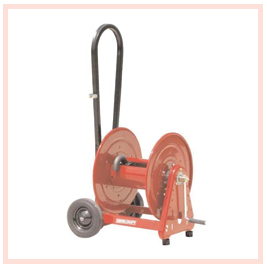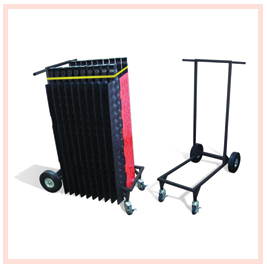
When it comes to lifting and transporting materials on the job, there's always a potential back injury waiting to strike. According to reports from the Occupational Safety and Health Administration (OSHA) and the National Institute for Occupational Safety and Health (NIOSH), between 30% and 33% of all workplace injuries fall into the musculoskeletal category. This includes injuries to muscles, tendons, nerves, ligaments, discs, and other soft tissues, causing sprains and strains particularly in the lower back, shoulders, neck, and arms. The cause of these injuries is often sparked from overexertion, repetitive motion, and awkward or sustained postures. In 2020, the Bureau of Labor Statistics reported that in private industries, the incidence rate for musculoskeletal injuries was 30.3 cases per 10,000 full-time workers, with an average of 11 days off per person. However, not every injury will be reported; and depending on the laws per state, not every case will result in a workers’ compensation payout.
Luckily, musculoskeletal injuries are also highly preventable with the help of workplace ergonomics training, along with simple lifting and transport aids like carts, dollies, ramps, and dock plates. Used in conjunction with good material handling practices, these tools can not only save time and make tasks easier, but also significantly cut down on workers' comp payouts and the logistics problems that arise from injury-related employee absences. CableOrganizer® has tips below on ways to improve workplace safety, by lightening your load with carts, ramps, and dock plates.
CARTS
Why is the wheel considered to be one of the biggest inventions of all time? Because it makes life, especially the working part of life, so much easier. It lets us move more, faster, and with far less effort than it would take to carry things item-by-item between Point A and Point B. And that’s exactly why it should play a major role in any material handling job. Repeatedly lifting and carrying objects can place a major strain on the back, shoulder, and abdominal muscles. In the same way, taking the "easy" route by kicking a load or prodding it along on the floor with your feet, in order to avoid picking it up, can cause painful and immobilizing groin muscle injuries. Whether you’re transporting boxes, gas canisters or spools of cable, task-specific wheeled carts and dollies are some of the best solutions for moving large quantities or heavy items with speed, ease, and maneuverability.

General Equipment Carts: A basic rolling cart that can handle everything from boxes to lengths of pipe and conduit can be an invaluable back-saver when you’re on the job. Get the most for your money by investing in an expandable or modular cart, which will let you customize its size and function for different materials. Look for one with pneumatic wheels, which roll smoothly and help to reduce bouncing and jarring motions when the cart is moved over uneven ground or flooring.

Spool Carts: Electrical contractors and anyone else who regularly works with large spools of cable can benefit from rolling spool carts, which allow you to wheel heavy cable reels from place to place, instead of risking injury by attempting to pick up or roll them. Spool carts can come in many forms, including those with multiple bars to accommodate and dispense wiring from a range of reel sizes.

Cord Protector Transport Carts: When you are working with multiple cord covers that you need to move from place to place in your facility or on a job site, this cart is invaluable. The RampRunner Transport Cart lets you install or move your cord covers in minutes, holding up to 10 of them simultaneously on a sturdy, tubular steel cart, which can hold up to 130 pounds. The swiveling molded rubber wheels are designed for greater control and traction.
RAMPS
Whether you're carrying a box a short distance or wheeling a fully loaded cart across a warehouse, ramps are a vital safety feature that can't be overlooked. Carrying boxes in your arms can easily obstruct your view of permanent floor obstructions like steps, curbs and shallow platforms, leading you to trip when you unexpectedly run into them. If floor elevation changes anywhere workers regularly walk with their arms full, consider installing ramps for a trip-free transition between levels.
Ramps are also a must-have safety measure anywhere carts and dollies may need to be pulled onto or off a curb — or travel up a few steps. At one time or another, we've all seen people try to wrestle a loaded rolling cart onto or off a curb — or up a few shallow steps. It may not seem particularly dangerous, but doing so can place a major strain on upper body muscles. It also creates a roll-back hazard for anyone positioned behind or below the cart. Using a ramp to make the transition makes the job easier; and greatly reduces the physical risk to everyone involved.
DOCK PLATES
Like ramps, dock plates span the distance between two disconnected floor surfaces (most commonly, trucks and loading docks) so that materials can be transported across a solid surface, instead of passed across wide gaps. Any time that materials need to cross a gap in flooring, whether they're being carried by hand or rolled on a cart or dolly, it's vital to firmly affix a dock plate between the two surfaces, so that carts can roll smoothly across; and workers have stable footing. Dock plates also greatly reduce the risk of musculoskeletal injuries from reaching to pass heavy items across a gap.


